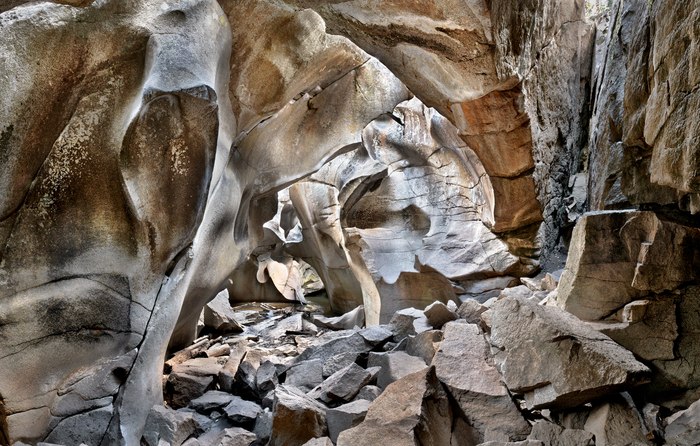Grotto is a term often used to describe a natural cave or cavern, though the word derives from something human-made. A richly decorated structure built by the Roman Emperor Nero soon after the burning of Rome in 64 A.D. had, over time, sunk underground only to be rediscovered in the 15th century. Upon viewing, it was considered very strange; something uncovered from the “underworld” and was called a grottesca – literally “of a cave.” This led to the French adjective grotesque – a word that suggested something strange, mysterious, and even disgusting.
The Grottos were built not by human hands but by the erosive powers of the swollen Roaring Fork River, which once flooded through this cavern at the end of the last ice age. Hidden from view beneath a trail, one enters a disorienting and otherworldly or, in this case, literally an “underworldly” and beautifully strange geological phenomenon.
I first entered the cave in winter when it was filled with ice, which entirely melted halfway through the following summer. The ice once served as refrigerated food storage for Ute people, including Chief Colorow and his family, who were hunting in the Roaring Fork Valley in the late 19th century using the Grottos when it was still part of ancestral Ute land.
Constructed of ancient granite, directly above is a natural bridge through which the light enters the cave. Further in, the cave narrows to a slot canyon, with light bouncing off the walls selectively lighting the fallen timbers, rocks, and pool, a remnant of the previous winter’s accumulated ice.
- James Baker

